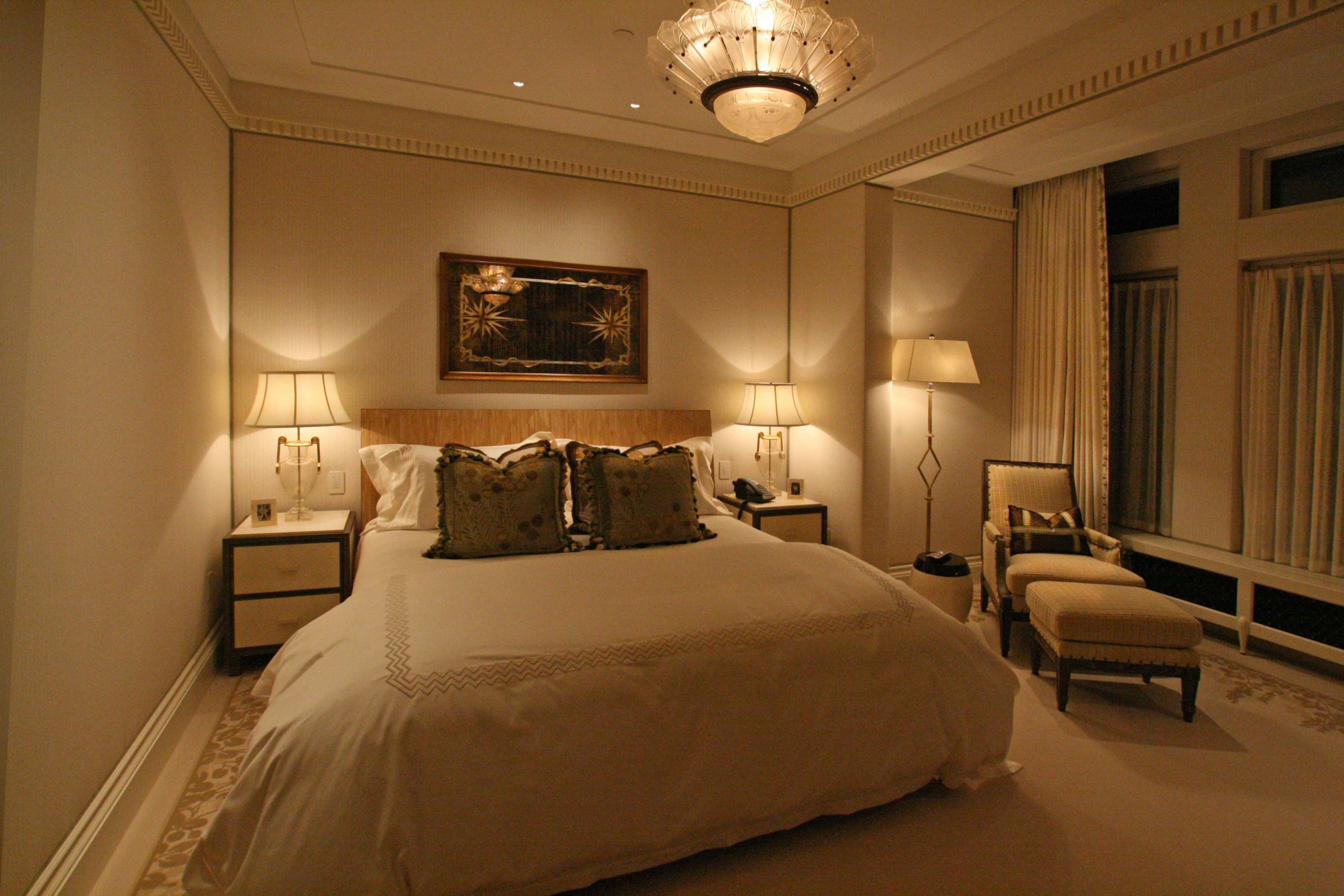Imagine sinking into a bedroom that feels like a personal oasis, a sanctuary where you can unwind and recharge. Achieving this tranquil atmosphere is easier than you think—it’s all about the lighting! In this comprehensive guide, we’ll illuminate the path to choosing the perfect lights for your bedroom, creating a space that’s both inviting and conducive to restful sleep.
Understanding Your Bedroom’s Illumination Needs
Before diving into the exciting world of light fixtures, let’s establish a foundation. Your bedroom lighting needs can be divided into three key categories:
- Ambient Lighting: This is your base layer of light, the soft glow that fills the room and sets the overall mood.
- Task Lighting: As the name suggests, task lighting is designed for specific activities like reading, working, or applying makeup.
- Accent Lighting: This is where you can get creative! Accent lighting highlights specific features in your room, adding visual interest and depth.
Assembling Your Lighting Dream Team: Types of Fixtures
Now for the fun part—choosing the actual lights! While the options may seem endless, understanding the basic types will empower you to make informed decisions.
-
Ceiling Lights: Your go-to for overall illumination, ceiling lights come in various styles:
- Flush Mount: These sleek fixtures sit flush with the ceiling, making them ideal for lower ceilings.
- Semi-Flush Mount: Hanging down slightly from the ceiling, semi-flush mounts add a touch of elegance to rooms with standard ceiling heights.
- Chandeliers: For a touch of grandeur, chandeliers serve as statement pieces that instantly elevate a bedroom’s aesthetic.
- Pendants: Like mini chandeliers, pendants work well over nightstands or in groups to create visual interest.
-
Wall Lights: Perfect for maximizing space, wall lights offer both style and functionality:
- Sconces: These chic fixtures mount directly to the wall and come in a plethora of styles to complement any décor.
- Swing-Arm Lamps: Ideal for bedside reading, swing-arm lamps provide adjustable, focused light right where you need it.
-
Table and Floor Lamps: Offering versatility, these lamps can serve as both task lighting and ambient lighting depending on their placement and wattage.
The Art of Layering Lights: Creating Depth and Dimension
Here’s a secret: the true magic of bedroom lighting lies in layering. Imagine a soft glow from your ceiling fixture setting the overall mood, while a table lamp on your nightstand provides focused light for reading. Add in a strategically placed accent light to highlight a beautiful piece of artwork, and you’ve created a dynamic and inviting space!
Pro Tip: Dimmer switches are a game-changer! They allow you to effortlessly adjust the brightness of your lights, creating different moods to suit any occasion.
Setting the Mood with Color Temperature
Believe it or not, the color of your light bulbs can significantly impact your mood and sleep quality.
- Warm White (2700-3000K): This color temperature mimics the warm, inviting glow of candlelight, creating a relaxing atmosphere perfect for bedrooms.
Outperforming Your Competition: What Lighting is Best for Bedrooms?
Let’s dive deeper into crafting an SEO article that not only informs but also outranks the competition.
Recommended Titles (Incorporating SEO Best Practices):
- Ultimate Bedroom Lighting Guide: Creating Your Dream Ambiance (Targets: guide, ambiance, ideas)
- Best Lighting for Sleep and Relaxation: Bedroom Lighting Ideas (Targets: best, sleep, relaxation)
- Beyond the Ceiling Light: Layered Lighting Ideas for a Cozy Bedroom (Targets: ideas, layered lighting, cozy)
Powerful Key Lines (Engaging & Informative):
- Transform your bedroom into a sleep sanctuary with strategic lighting that promotes relaxation and well-being. (Focus: benefits and emotions)
- Forget the single bulb! Layering ambient, task, and accent lighting is the secret to a functional and stylish bedroom. (Focus: actionable advice and design principles)
- From soft white for cozy evenings to cool white for energetic mornings, choosing the right color temperature sets the mood. (Focus: color temperature and its impact)
- Don’t underestimate the power of dimmers! They allow you to customize your lighting for any activity or mood. (Focus: practicality and versatility)
Unique Insights & Untapped Potential:
- Focus on Sleep Hygiene: Connect good lighting to improved sleep quality and discuss blue light’s impact on melatonin production.
- Smart Lighting Integration: Explore the benefits of smart bulbs and voice-controlled lighting for convenience and sleep routines.
- Small Bedroom Solutions: Offer specific advice for maximizing lighting in smaller bedrooms.
- Style-Specific Lighting Ideas: Provide tailored recommendations for different bedroom styles (e.g., minimalist, bohemian, industrial).
Best Bedroom Light Color for Sleep: Expert Guide & Ideas
Choosing the right light color for your bedroom is just as important as selecting the perfect paint color for your walls! Let’s explore how to find the ideal lighting hues to transform your sleep sanctuary.
The Science of Red Light and Sleep
Red light, often overlooked in the world of bedroom lighting, emerges as the sleep expert-backed choice for promoting natural sleep cycles. Research suggests that red light, mimicking the hues of sunset, encourages the production of melatonin, the hormone that regulates our sleep-wake cycles.
Matthew Shaw, head of sales at Ultra LEDs, emphasizes the benefits of red light, stating, “‘Switching to a natural red color light in your bedroom can help your body ease into its sleep cycle more naturally as it produces a wavelength – similar to that of the setting sun'”. Incorporating red light bulbs, lamps, or smart bulbs with adjustable color temperature can significantly enhance your sleep environment.
Beyond Red Light: Layered Lighting for Every Mood
While red light takes center stage for sleep, incorporating a strategic blend of warm and cool tones throughout your bedroom allows you to curate the perfect ambiance for any time of day.
- Warm Light (2700-3000K): Ideal for general bedroom lighting and creating a cozy atmosphere. Consider warm white ceiling fixtures, wall sconces, and bedside lamps.
- Cool White Light (3000-4000K): Better suited for task lighting that requires focus, such as reading lamps or desk lamps.
- Accent Lighting: Offers an opportunity to introduce various color temperatures to highlight specific features or create visual interest.
Personalizing Your Bedroom Light Color
Remember, there’s no one-size-fits-all approach to choosing the right light color. Tailor your choices to your individual needs:
- Sleep Sanctuary: Prioritize red light for its sleep-promoting benefits.
- Reading Nook: Opt for a combination of warm ambient light and a cool white task light for optimal focus and relaxation.
- Relaxing Retreat: Focus on warm ambient light and consider incorporating accent lighting with calming colors like blues or greens.
Harnessing the Power of Natural Light
Don’t underestimate the impact of natural light! Maximize its benefits with these strategies:
- Daytime Ambiance: Sheer curtains diffuse harsh sunlight, creating a soft, inviting atmosphere.
- Strategic Placement: Mirrors can work wonders in reflecting natural light, making your bedroom feel brighter and more spacious.
- Complements Artificial Light: Exposure to natural light during the day promotes healthy sleep-wake cycles, enhancing the effectiveness of red light at night.
Beyond the Basics: Mastering Bedroom Lighting for Sleep, Relaxation, and Style
Beyond simply illuminating your bedroom, strategic lighting can transform this personal space into a haven of functionality and style. Let’s explore how to achieve the perfect lighting balance for your needs.
The Power of Layered Lighting
Layered lighting goes beyond a single ceiling fixture, creating depth, dimension, and visual interest. It involves incorporating multiple light sources at varying heights and intensities.
Benefits of Layered Lighting:
- Enhanced Ambiance: Creates a warm, inviting atmosphere that promotes relaxation.
- Improved Functionality: Provides adequate illumination for specific tasks like reading or getting dressed.
- Flexibility: Allows you to customize the mood and brightness of your bedroom to match your needs throughout the day.
Types of Bedroom Lighting: A Guide to Choosing the Right Fixtures
Understanding the different types of lighting and their specific purposes empowers you to create a well-balanced lighting scheme.
- Ambient Lighting: Provides overall illumination and sets the mood.
- Examples: Ceiling fixtures, flush mount lights, chandeliers, pendant lights.
- Task Lighting: Directs focused light for specific activities.
- Examples: Bedside lamps, desk lamps, floor lamps.
- Accent Lighting: Highlights architectural features, artwork, or decorative elements.
- Examples: Wall sconces, picture lights, recessed lighting.
Determining the Right Number of Lights: A Personalized Approach
There’s no magic number when it comes to how many lights your bedroom needs. The ideal number depends on several factors:
- Room Size: Larger bedrooms naturally require more light sources.
- Ceiling Height: Higher ceilings may necessitate brighter bulbs or additional fixtures.
- Natural Light: Consider how much natural light your bedroom receives throughout the day.
- Personal Preference: Ultimately, the best guide is your own sense of comfort and what feels right in your space.
Expert Tips for Optimal Bedroom Lighting
- “The minimum number of lights in a bedroom is probably two: a ceiling light and a bedside lamp or pendant, but there really is no maximum.” – Driven by Decor
- “Start with ambient lighting, such as a central ceiling fixture, to provide general illumination. Add task lighting where needed, such as bedside lamps for reading or a desk lamp for work.” – Homes & Gardens
- “Don’t forget about lamps!” – The Spruce
Additional Considerations for a Tranquil Oasis
- Light Temperature: As discussed earlier, opt for warm white (2700-3000K) bulbs to create a cozy and relaxing atmosphere.
- Dimmers: Installing dimmer switches gives you greater control over the brightness level of your lights, allowing you to fine-tune the mood.
- Smart Lighting: Consider incorporating smart bulbs or smart switches for enhanced convenience and the ability to schedule lighting changes throughout the day.
To make the most of your limited space in other areas of your home, explore options like living room furniture for small rooms, designed to maximize space without compromising on style or comfort.
- How to Remove Water Stains from Fabric: A Complete Guide - April 26, 2025
- How to Get Motor Oil Out of Clothes: Proven Methods & Expert Tips - April 26, 2025
- How to Get Deodorant Out of Black Shirts: Easy Stain Removal Guide - April 26, 2025










